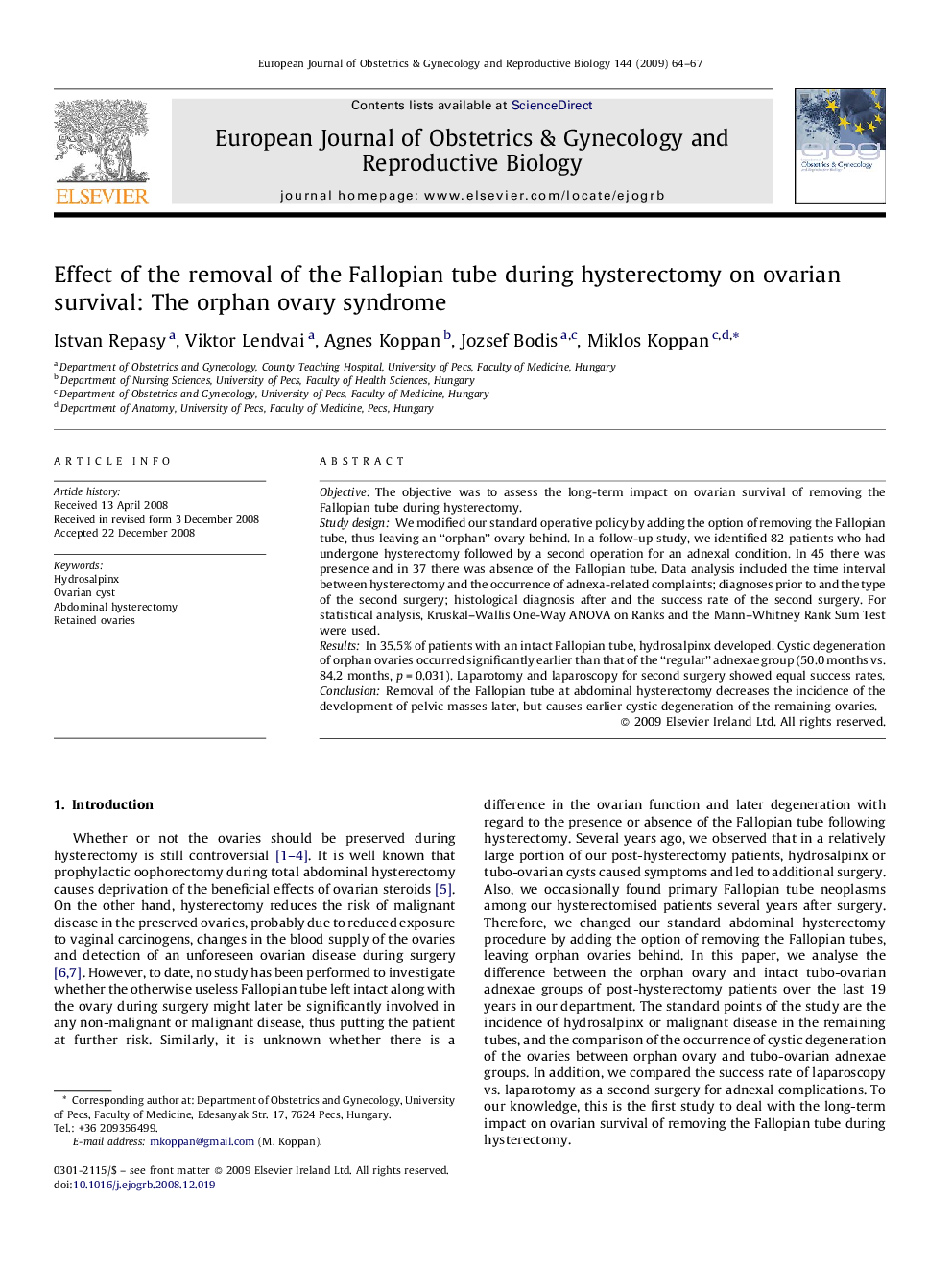| Article ID | Journal | Published Year | Pages | File Type |
|---|---|---|---|---|
| 3921785 | European Journal of Obstetrics & Gynecology and Reproductive Biology | 2009 | 4 Pages |
ObjectiveThe objective was to assess the long-term impact on ovarian survival of removing the Fallopian tube during hysterectomy.Study designWe modified our standard operative policy by adding the option of removing the Fallopian tube, thus leaving an “orphan” ovary behind. In a follow-up study, we identified 82 patients who had undergone hysterectomy followed by a second operation for an adnexal condition. In 45 there was presence and in 37 there was absence of the Fallopian tube. Data analysis included the time interval between hysterectomy and the occurrence of adnexa-related complaints; diagnoses prior to and the type of the second surgery; histological diagnosis after and the success rate of the second surgery. For statistical analysis, Kruskal–Wallis One-Way ANOVA on Ranks and the Mann–Whitney Rank Sum Test were used.ResultsIn 35.5% of patients with an intact Fallopian tube, hydrosalpinx developed. Cystic degeneration of orphan ovaries occurred significantly earlier than that of the “regular” adnexae group (50.0 months vs. 84.2 months, p = 0.031). Laparotomy and laparoscopy for second surgery showed equal success rates.ConclusionRemoval of the Fallopian tube at abdominal hysterectomy decreases the incidence of the development of pelvic masses later, but causes earlier cystic degeneration of the remaining ovaries.
